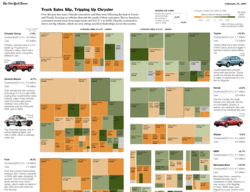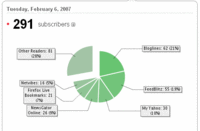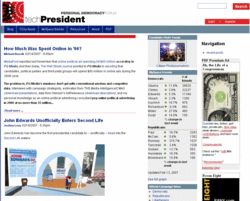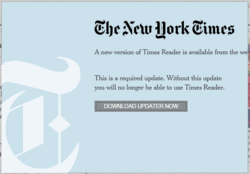 This is a little off-topic for Content Matters, but every time I recruit for a position, I’m amazed at the responses that I get. So consider this part online venting and part guidance.
This is a little off-topic for Content Matters, but every time I recruit for a position, I’m amazed at the responses that I get. So consider this part online venting and part guidance.
Online services like Monster, CareerBuilder, Indeed and others have made job hunting easier. In many ways, though, it’s made the process more difficult. Employers have too many resumes to screen and it’s difficult for candidates to stand out.
As a result, when screening resumes, most employers first look for ways to exclude, rather than include. If we can weed out all the bad ones, what’s left may be a manageable universe to go through.
Below are some tips that may seem fairly obvious, but I find that even when recruiting for the most senior positions, I get applicants who violate these rules. If you follow them, you’ll have a better chance of making it through the first cut.
5. Check your LinkedIn profile, myspace page, facebook listing, ZoomInfo page and anything on the first page of Google results; the employer most likely will.
4. Don’t name your resume sally_smith_projectmgr_resume.doc. That makes me assume you’re not really a project manager, but have modified your resume to look like one. Yes, it’s OK to have multiple versions of your resume. Just don’t name them that way. Instead, just name them all generically (sally_smith.doc) then use your directory tree to store different versions (e.g. my documents\resume\project management\sally_smith.doc).
3. Write a real cover letter and take the time to make it relevant to the job that was posted. Don’t use a merge letter, where your first line ends up saying “I am seeking an opportunity as Director-Product Marketing-NYC.” Take a few minutes to read the position description, then browse through the company’s website. Use what you learn to make your cover letter compelling. Contrary to popular opinion, job hunting is not a “numbers game”. Applying online for thousands of positions for which you are not qualified will not get you hired. Identifying those where you have specific experiences that match the requirements, and clearly highlighting those experiences in a cover letter will get you an interview.
2. If the position is based in New York City and your Monster posting says you are only exploring opportunities in Phoenix, don’t bother applying. In fact, if you are applying for any position where you would be interested in a relocation, use your cover letter to explain that. Say “For family reasons, I’m looking to return to the northeast” or whatever. Otherwise, you won’t get consideration unless you have a very unique set of skills unavailable in the employer’s market.
1. The first thing I see when you send your resume is your email address. What does that email address say about you?
If it’s an AOL address, it says you’re not a very sophisticated technology user. That’s fine for some positions, but if you’re applying for an e-Commerce role, you’ll be dead in the water. Even a Yahoo or Hotmail address makes me think of a teenager rather than a serious business professional. If you have your own domain, that’s great. Otherwise, get a Gmail account. It’s free and it looks professional.
Also, please keep your email address simple. Ideally, you should just have your name, such as [email protected]. I realize that’s not always possible, particularly with more common names than mine, but if you try using the underscore and perhaps a middle initial, you might have luck. Regardless, avoid using things like [email protected] or [email protected].
Will following these guidelines get you hired? No promises there. However, they will keep you from being automatically routed to my junk file.
Update: Derek Park at Former Slacker, has nine resume tips of his own...
![]() Data visualization is not yet mainstream, but it continues to pop up, giving users a better understanding of complex views of data.
Data visualization is not yet mainstream, but it continues to pop up, giving users a better understanding of complex views of data.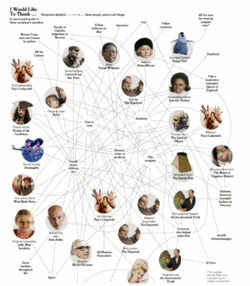 The New York Times has begun to integrate visual maps more and more into their content. Today’s Times includes a visual map showing links between Academy Award winners and the parties they thanked, including mom, the Academy, God, their fellow nominees and even the “People of Uganda, Argentina or Bavaria” (had Borat won, we could have added the People of Kazakhstan).
The New York Times has begun to integrate visual maps more and more into their content. Today’s Times includes a visual map showing links between Academy Award winners and the parties they thanked, including mom, the Academy, God, their fellow nominees and even the “People of Uganda, Argentina or Bavaria” (had Borat won, we could have added the People of Kazakhstan).



